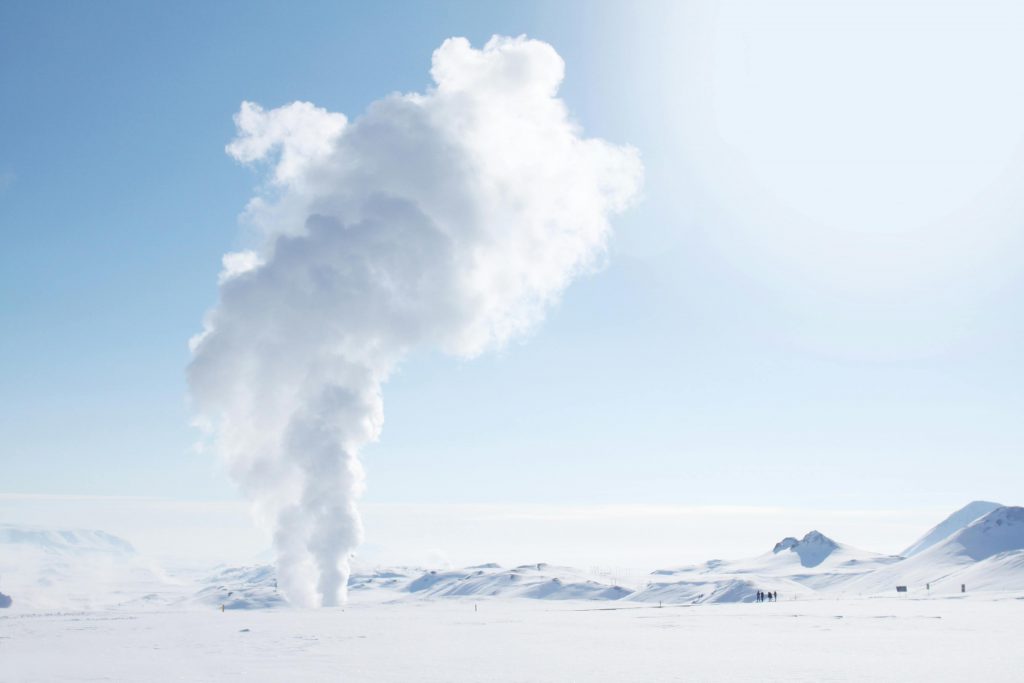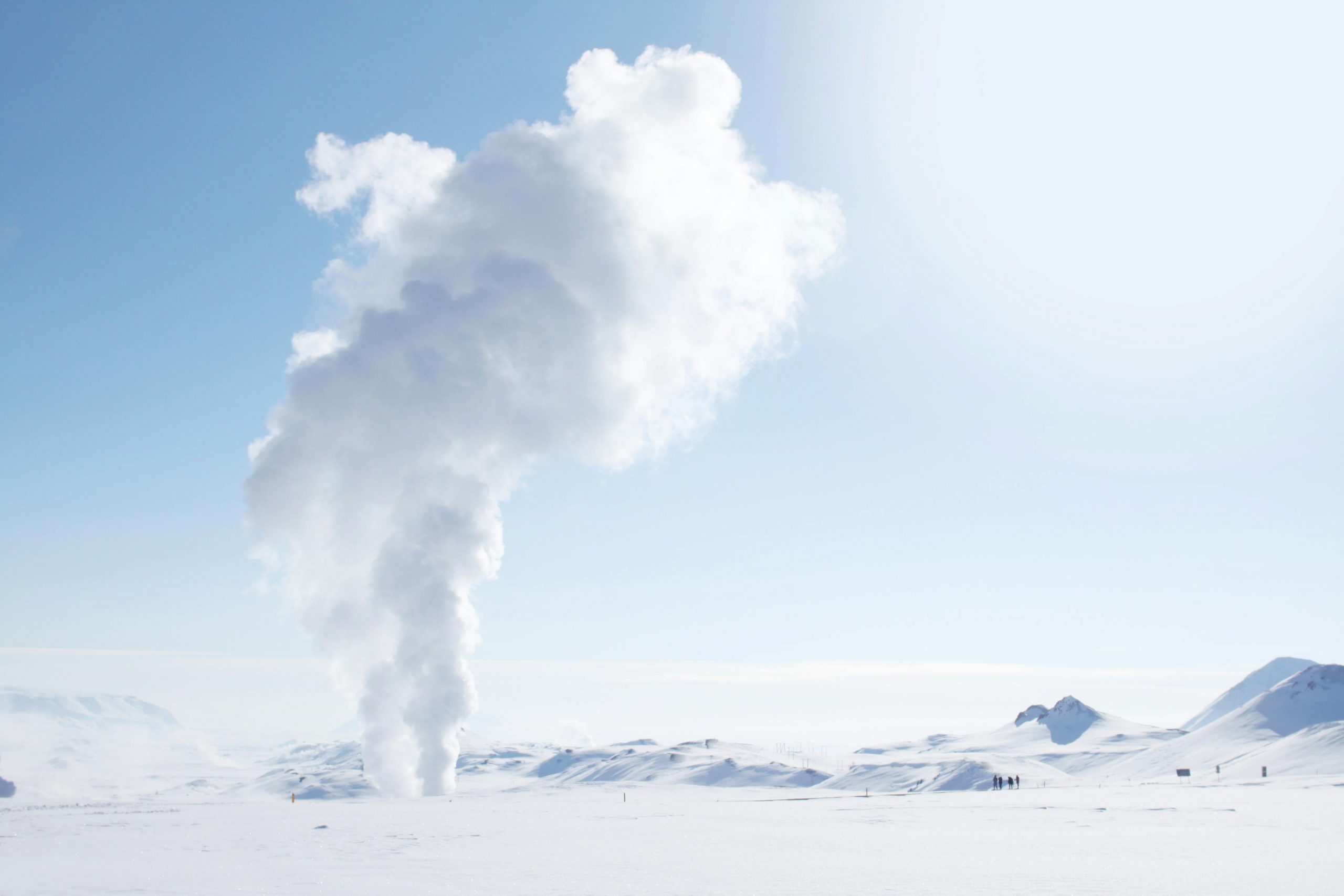Renewable Energy Sources- Geothermal energy
Geothermal energy is heat within the earth. The word geothermal comes from the Greek words geo (earth) and therme (heat). Geothermal energy is a renewable energy source because heat is continuously produced inside the earth. People use geothermal heat for bathing, for heating buildings, and for generating electricity. The slow decay of radioactive particles in the earth’s core, a process that happens in all rocks, produces geothermal energy.
The earth has four major parts, or layers: [1]
• An inner core of solid iron that is about 1,500 miles in diameter
• An outer core of hot molten rock called magma that is about 1,500 miles thick.
• A mantle of magma and rock surrounding the outer core that is about 1,800 miles thick
• A crust of solid rock that forms the continents and ocean floors that is 15 miles to 35 miles thick under the continents and 3 miles to 5 miles thick under the oceans.
Scientists have discovered that the temperature of the earth’s inner core is about 10,800 degrees Fahrenheit (°F), which is as hot as the surface of the sun. Temperatures in the mantle range from about 392°F near the mantle-crust boundary to about 7,230°F near the mantle-core boundary. Rocks and water absorb heat from magma deep underground. The rocks and water found deeper underground have the highest temperatures. The earth’s crust is broken into pieces called tectonic plates. Magma comes close to the earth’s surface near the edges of these plates and can move to the surface of the earth through gaps in the plates. This is where volcanoes occur. Magma that reaches the earth’s surface is called lava. [1]
The main advantages of geothermal energy are its low cost and its ability to operate year-round at high capacity factors. This allows it to provide firm, dispatchable electricity and, if incentivised, ancillary services to the electricity system. As the penetration of solar and wind power grows, these characteristics become more valuable. The levelised cost of electricity (LCOE) from geothermal power projects averaged between USD 0.049 and USD 0.085 per kWh between 2010 and 2020. As a renewable resource, geothermal covers a significant share of electricity demand in countries such as Iceland, El Salvador, New Zealand, Kenya and the Philippines, and meets more than 90% of heating demand in Iceland. [2]
 Also as a source of renewable energy, the main advantages of geothermal energy are environmental. It produces just one-sixth of the carbon dioxide emitted by a clean natural-gas power plant. Geothermal is also cheaper than conventional energy, with savings of as much as 80% compared with fossil fuels. Unlike other renewable energy sources, such as solar and wind, it is constantly available. [3]
Also as a source of renewable energy, the main advantages of geothermal energy are environmental. It produces just one-sixth of the carbon dioxide emitted by a clean natural-gas power plant. Geothermal is also cheaper than conventional energy, with savings of as much as 80% compared with fossil fuels. Unlike other renewable energy sources, such as solar and wind, it is constantly available. [3]
Despite being inexpensive, sustainable and environmentally-friendly, geothermal is not without its drawbacks: [4]
• The process of injecting high-pressure streams of water into the Earth can result in minor seismic activity or small earthquakes.
• Geothermal plants have been linked to subsidence, or the slow sinking of land. This happens as the underground fractures collapse upon themselves. This can lead to damaged pipelines, roadways, buildings, and natural drainage systems.
• Geothermal plants can release small amounts of greenhouse gases such as hydrogen sulfide and carbon dioxide.
• Water that flows through underground reservoirs can pick up trace amounts of toxic elements such as arsenic, mercury, and selenium. These harmful substances can be leaked to water sources if the geothermal system is not properly insulated.
• Although the process requires almost no fuel to run, the initial cost of installing geothermal technology is expensive. Developing countries may not have the sophisticated infrastructure or start-up costs to invest in a geothermal power plant. Several facilities in the Philippines, for example, were made possible by investments from American industry and government agencies. Today, the plants are Philippine-owned and operated.
Geothermal energy exists in different forms all over the Earth (by steam vents, lava, geysers, or simply dry heat), and there are different possibilities for extracting and using this heat. In New Zealand, natural geysers and steam vents heat swimming pools, homes, greenhouses, and prawn farms. New Zealanders also use dry geothermal heat to dry timber and feedstock. [4]
Other countries, such as Iceland, have taken advantage of molten rock and magma resources from volcanic activity to provide heat for homes and buildings. In Iceland, almost 90% of the country’s people use geothermal heating resources. Iceland also relies on its natural geysers to melt snow, warm fisheries, and heat greenhouses. The United States generates the most amount of geothermal energy of any other country. Every year, the U.S. generates at least 15 billion kilowatt-hours or the equivalent of burning about 25 million barrels of oil. Industrial geothermal technologies have been concentrated in the western U.S. In 2012, Nevada had 59 geothermal projects either operational or in development, followed by California with 31 projects, and Oregon with 16 projects. The cost of geothermal energy technology has gone down in the last decade and is becoming more economically possible for individuals and companies. [4]
[1] https://www.eia.gov/energyexplained/geothermal/
[2] https://www.irena.org/Energy-Transition/Technology/Geothermal-energy
[3] https://www.twi-global.com/technical-knowledge/faqs/geothermal-energy
[4] https://education.nationalgeographic.org/resource/geothermal-energy/





